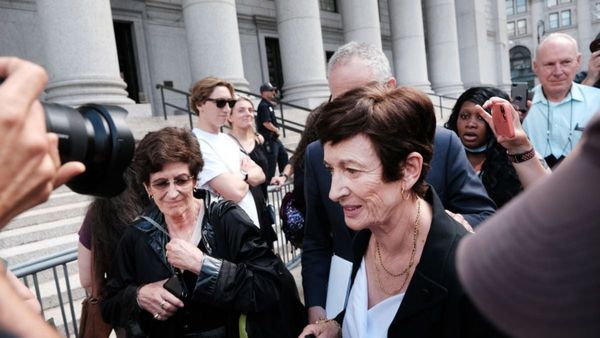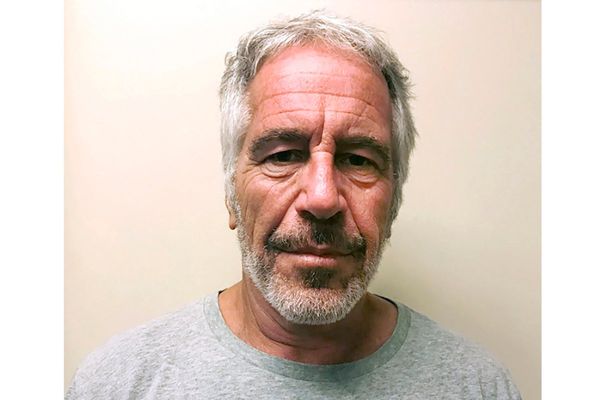“The sound of children screaming has been removed.”
It was an editor’s note attached to a video, published by the Austin American-Statesman, of Uvalde, Texas police officers’ delayed response during the Robb Elementary School shooting that killed 19 children and two teachers.
It feels, this summer, like our national motto.
The sound of children screaming has been removed … from the conscience of the 169 lawmakers who just voted against the Active Shooter Alert Act, a bipartisan bill enacting an Amber-Alert-like system to notify the public when an active shooter is in their community. (The bill passed anyway.)
The sound of children screaming has been removed … from the hearts of gun lobbyists who continue to insist the only thing that stops a bad guy with a gun is a good guy with a gun, despite bloody incident after bloody incident after bloody incident where an armed bad guy evades dozens upon dozens of armed good guys.
The sound of children screaming has been removed … from too much of our public discourse around gun violence in disinvested neighborhoods, as though the frequency of trauma lessens the obscenity of it.
Shortly after a gunman opened fire on a Fourth of July parade in Highland Park, Illinois, killing seven people and terrorizing an untold number of others, the Washington Post published a story headlined “With little outcry, Chicago’s bloody weekend eclipsed Highland Park toll.”
“They have a lot of resources there in Highland Park,” Bobbie Brown, 62, of Chicago's Englewood neighborhood, told reporter Robert Klemko. “Ain’t that something? Our babies see people get shot while they’re at a playground, and there’s no counseling. They have to suck it up and deal with it.”
The answer, of course, should never be fewer resources — in Highland Park or Chicago or Uvalde or any other community torn apart by violence. The answer should be a recognition that an outpouring of support — emotional and financial support, counselors rushing to help, vigils and memorials dotting the broken landscape — is exactly what a community needs and deserves: to heal, to remember, to hope, to be reminded that humanity’s capacity for love and light and resilience will always outlast its capacity to harm.
And then, after that recognition, a plan to more evenly distribute that support. So no child has to suck it up and deal with it.
The sound of children screaming has been removed … from the minds of the callous doubters who disputed a story about a 10-year-old girl becoming pregnant after she was raped — a story President Joe Biden told during the signing of an executive order on abortion access in early July. Abortion foes and conservative media, including the Wall Street Journal's editorial page, implied the story was made up, only to walk back their doubts after a 27-year-old man was arrested in the case.
It’s hard to summarize the turn of events more succinctly than Jezebel reporter Laura Bassett, who wrote: “It’s a story that anti-abortion folks don’t want to believe because it’s really tough to defend a Supreme Court decision and subsequent state law that would force a 10-year-old girl to give birth to her rapist’s child, but these things nonetheless happen. And they will happen more now that states have been given the green light to impose their leaders’ religious beliefs on people’s basic health care.”
Or, as New York Magazine senior correspondent Irin Carmon tweeted: “This Ohio tragedy is, among many other things, a lesson that there is no account deemed sympathetic enough to break through to people who simply do not care about the suffering they’re causing. Instead we get denial, misdirection, or attacking those who told the story.”
The sound of children screaming has been removed.
The editors who published the video of the Uvalde police, and made the decision to remove the sound of children screaming, had a series of tremendously difficult decisions to make. For what it’s worth, I think they made the right ones.
“The Statesman is publishing two versions of the video, one that we edited to just over four minutes and highlights critical moments: the ease of gunman entering the school, how he shot his way into the classroom, the repeated sound of gunfire, and then the delay by police to stop the killer for 77 minutes as dozens of heavily armed officers stage in the school hallway before a group finally storms the classroom and kill the gunman,” the newspaper’s executive editor, Manny Garcia, wrote in a note to readers.
“We are also publishing the entire video for those who want to see what we obtained," he continued. "In both videos we blurred the identity of a child who exits a restroom as the shooter approaches the classroom. The child runs back to the restroom to hide and was later rescued. We also have removed the sound of children screaming as the gunman enters the classroom. We consider this too graphic.”
I agree. My revulsion at the editor’s note (and how many ways in which it can be applied) has nothing to do with the editors’ decision. It has everything to do with how often children are sent screaming in this country — and how little interest our policymakers appear to have in acknowledging this tragic fact, let alone changing it.
“We have to bear witness to history,” Garcia wrote in his note to readers, “and transparency with unrelenting reporting is a way to bring change.”
So is unrelenting voting. And advocating. And pushing ourselves and our leaders to be honest and be better.
It’s tempting to look away. To cover our ears and avert our gaze and harden our hearts. But we’re better than that. We have to be. Our children need us to be.







